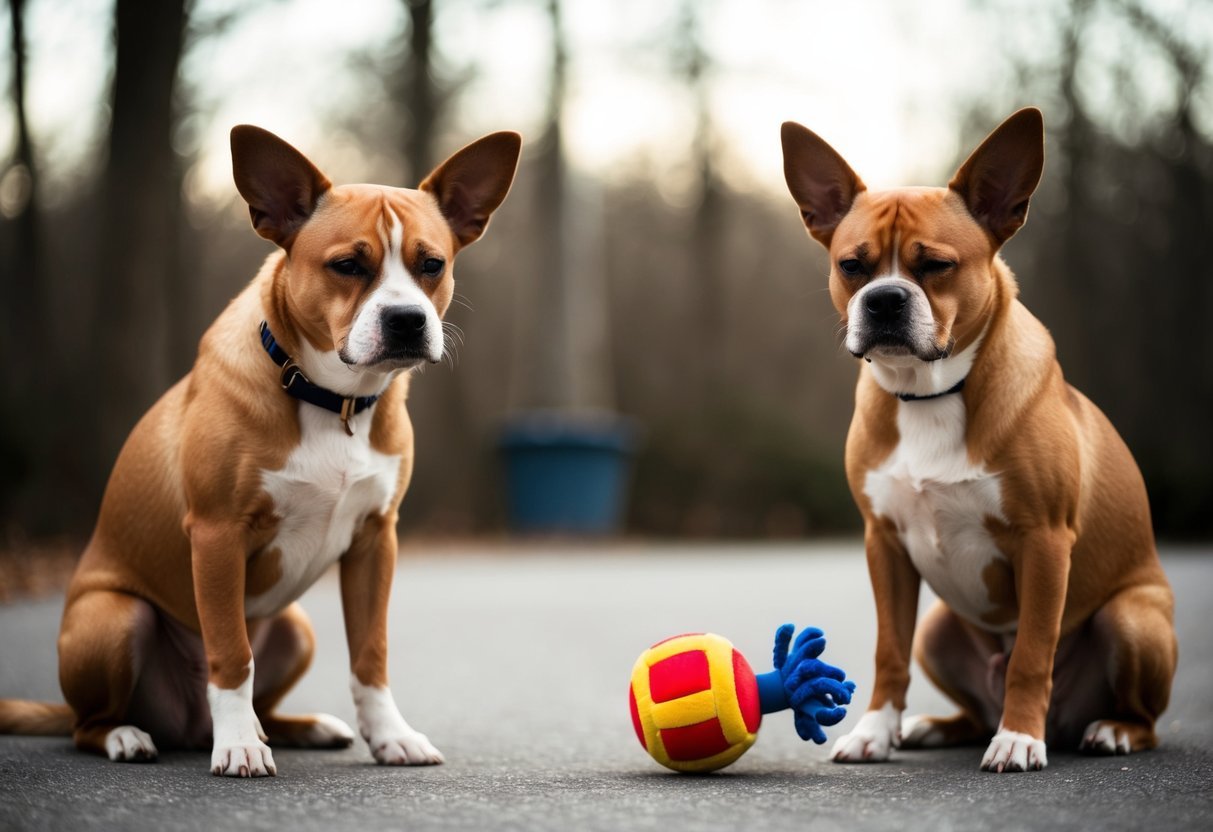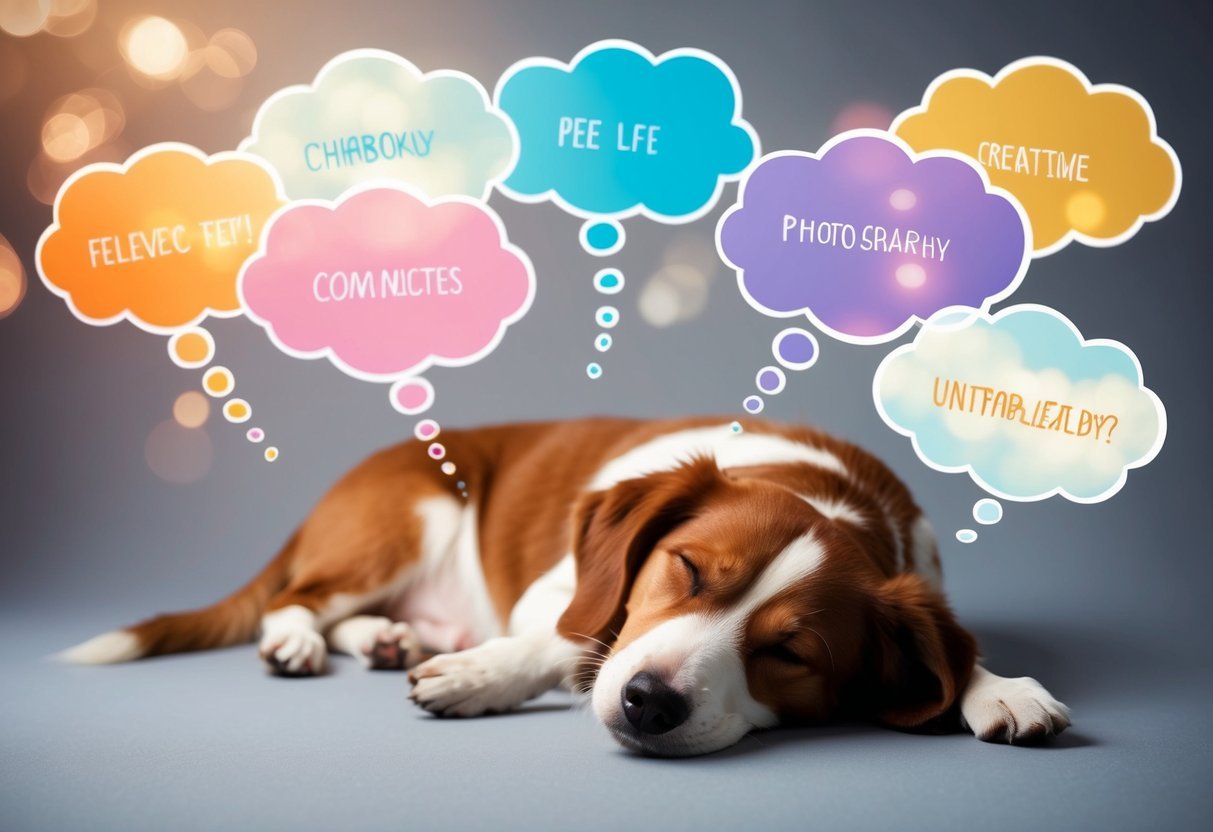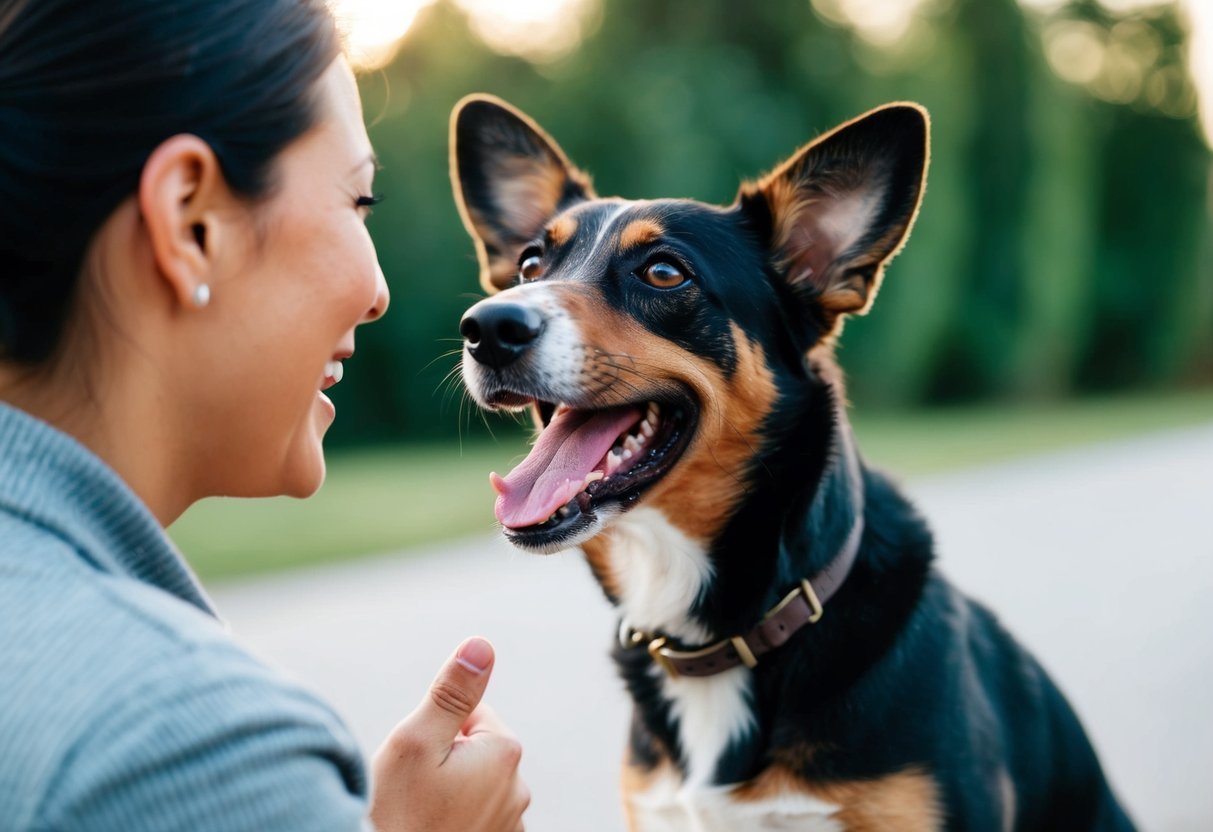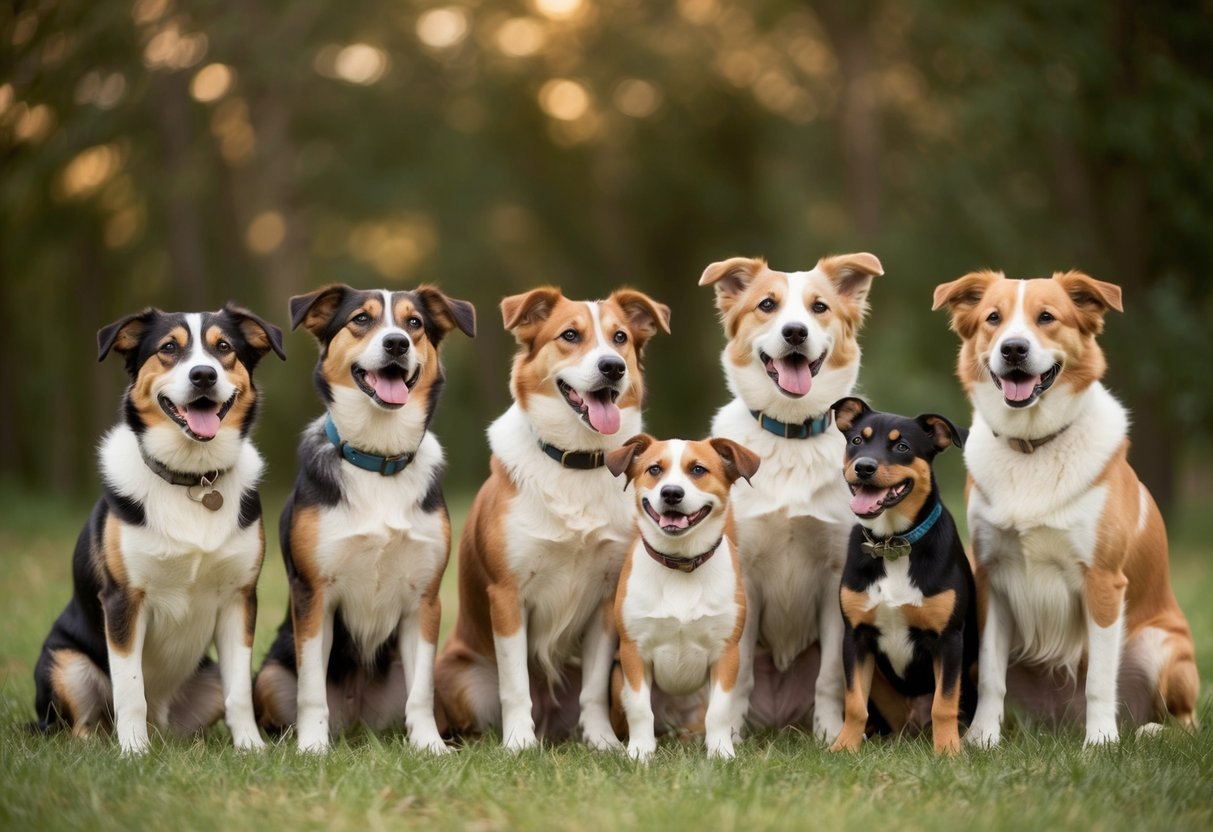Understanding your dog’s emotions can strengthen your bond and improve your relationship.
Dogs are not just loyal companions; they experience a range of feelings that can impact their behavior. Research has revealed seven distinct emotions that dogs can truly feel, helping you recognize what your furry friend might be going through.
As a dog owner, grasping these emotions can guide how you care for and respond to your pet’s needs.
Knowing what your dog feels allows you to react appropriately, ensuring a happier and healthier environment for both of you.
Embracing this understanding can make your daily interactions more meaningful and enjoyable.
1) Why Your Dog Tilts Its Head
When your dog tilts its head, it might look adorable, but there’s more to it.
This behavior can happen when dogs try to understand sounds or your commands better.
Dogs have very sensitive hearing.
By tilting their heads, they can adjust the position of their ears.
This helps them locate where a sound is coming from more accurately.
Additionally, tilting the head can help them see your face clearly.
Sometimes, a dog’s muzzle blocks their view of your expressions.
This little tilt can give them a better look at you, which is important for understanding your emotions.
Some studies suggest that head tilting may also be linked to intelligence.
For example, certain dogs that can quickly remember toy names show this behavior more often.
You might notice your furry friend tilting its head when you call out a specific toy or word.
So, the next time you see your dog cocking its head to one side, remember that it’s not just cute.
They’re trying to connect with you and make sense of the world around them.
2) The Secret Behind Tail Wagging
When your dog wags its tail, it can mean so much more than just happiness.
Tail wagging is a key way dogs communicate their feelings.
The speed and position of the wag can tell you about your dog’s emotions.
A loose, wide wag often means your dog is feeling friendly and happy.
On the other hand, a stiff or slow wag might show that your dog feels uncertain or stressed.
It’s important to pay attention to these signs.
Studies have even shown that dogs can interpret different tail wags from other dogs.
For example, they may feel more anxious when they see a dog wagging to the left.
Understanding these signals can strengthen your bond with your dog.
It’s all about recognizing what those wags really mean.
Puppy Dog Eyes Explained

You’ve seen it before: your dog looks at you with those big, round eyes that make your heart melt.
This expression is often called “puppy dog eyes.”
Scientists believe that dogs have evolved extra muscles around their eyes.
These muscles allow them to raise their eyebrows and create larger, more appealing eyes.
This helps them connect with you on an emotional level.
When your dog makes this face, it triggers feelings of affection and care.
It’s like they know exactly how to get what they want.
Studies show that this behavior likely developed during their domestication.
This emotional bond between you and your dog has been shaped over thousands of years.
Your furry friend uses these adorable eyes to communicate and bond with you.
You might find it hard to resist their charm when they give you those puppy dog eyes.
Next time your dog looks at you like this, remember it’s not just a cute look.
It’s a sign of their emotional intelligence and a way they show love.
Why Dogs Circle Before Lying Down

You may have noticed your dog circling around before settling down.
This behavior has roots in instinct and comfort.
In the wild, dogs’ ancestors would circle to create a safe spot in grass or leaves.
This helped them avoid danger while resting.
It’s a natural instinct to check for threats before lying down.
Circling can also be about marking territory.
Dogs have scent glands in their paws, so this behavior leaves their scent behind.
It tells other animals that this area is claimed.
Even though your dog is safe at home, these ancient behaviors still show up.
It’s part of their deep connection to their wild past.
Understanding this helps you see your dog’s world through their eyes.
Next time you see your dog spinning around, remember it’s more than just a quirky habit.
It’s a mix of instinct and comfort that connects your furry friend to their ancestors.
5) Understanding Canine Jealousy

Dogs can feel a range of emotions, and jealousy is one of them.
You might notice your dog getting upset when you give attention to another pet.
This reaction shows they want to be the center of your world.
Research shows that dogs can show signs of jealousy similar to what kids do.
They can act resentful or act out when they think another animal is getting more love or treats.
If you see your dog push between you and another pet, they are likely feeling jealous.
It’s important to recognize these feelings.
If jealousy leads to aggression or anxiety, consider reaching out to a trainer or vet.
You want to ensure your dog is happy and secure in your home.
Understanding jealousy in dogs helps you support their feelings.
By managing situations where jealousy arises, you can create a more peaceful home for everyone.
Simple steps, like giving each pet time and attention, can ease those jealous feelings.
6) The Science of Dog Dreams

Have you ever watched your dog twitching in their sleep? It’s a common sight that makes many pet owners wonder if dogs dream.
Scientists believe that dogs do experience dreams much like humans do.
During sleep, your dog’s brain goes through cycles, including REM sleep.
This stage is when dreaming happens.
The brain activity here suggests they might be reliving daily activities, like playing or chasing squirrels.
You might notice your dog growling or barking in their sleep.
These sounds could point to exciting or even stressful dreams.
It’s interesting to think about what they might be dreaming of when they act this way.
Just like us, dogs can also show different emotions while dreaming.
A relaxed face might mean they are enjoying a happy dream, while a tense body could signal a more frightening one.
This behavior can help you understand your pup’s feelings better.
While science can’t tell us exactly what dogs dream about, studies suggest it’s related to their experiences.
Whether it’s chasing a ball or cuddling with you, these moments might replay in their dreams.
You can learn more about this by checking out Bone Voyage Dog Rescue.
7) Why Dogs Love Squeaky Toys

Many dogs love squeaky toys because they appeal to their instinctual nature.
When your dog hears that high-pitched squeak, it can trigger their hunting instincts.
It’s like a little prize for them to catch!
The sound mimics the noise of small animals, which can make your dog feel like they’re on a real hunt.
This adds excitement to their playtime.
The chase and capture of the toy give a sense of accomplishment.
Squeaky toys also keep your dog mentally and physically active.
Chasing and chewing these toys can provide essential exercise.
Plus, the fun noise encourages your pup to engage more.
For many dogs, the satisfaction of “catching” the squeaky toy builds their confidence.
It’s not just a game; it’s a way for your dog to express their natural behaviors.
So, next time you hear that squeak, remember it’s not just noise.
It’s part of what makes playtime enjoyable for your furry friend.
If you want to explore more, see the science behind dogs and squeaky toys.
Understanding Dog Emotions

Dogs experience a range of emotions similar to humans.
Their feelings can impact their behavior and interactions with you.
Recognizing these emotions helps strengthen your bond and improve communication.
Basics of Canine Emotion
Dogs have a variety of emotions, including joy, fear, anger, and love.
Research shows that they feel happiness when playing and anxiety during changes, like moving to a new home.
The basic emotions of dogs are often linked to their survival instincts.
For instance, fear can trigger a fight-or-flight response.
This means when a dog feels threatened, it may either stand its ground or retreat.
Understanding these emotions can help you meet your dog’s needs more effectively.
Happy dogs wag their tails and often want to play, while fearful dogs may hide or respond with growls.
How Dogs Express Emotions
Dogs express their feelings through body language, vocal sounds, and interactions.
For example, a wagging tail usually signals happiness.
However, the speed and height of the wag can provide extra context:
- Slow wag: Uncertainty or curiosity
- Fast wag: Excitement or joy
- Low wag: Submission or fear
Vocal sounds also play a key role.
Barks can mean various things, from alerting you to a stranger to asking for attention.
Whines may indicate distress or a desire for comfort.
Further, your dog’s physical closeness to you can signal trust and affection.
When a dog leans against you, it often means they feel safe and content.
Scientific Insights on Dog Emotions

Recent research has shed light on how dogs experience emotions.
Scientists are using various methods to understand these feelings better.
Their findings reveal that dogs can express emotions similar to humans, making them more relatable companions.
Research Methods
To study dog emotions, researchers employ several techniques.
One popular method involves observing dog behavior in different situations.
This includes noting how dogs react to various stimuli, such as a stranger entering the home or encountering a loud noise.
Scientists also use technology, such as eye-tracking tools and facial recognition software, to analyze dogs’ expressions.
These tools help identify subtle changes in their faces that indicate emotions like fear, happiness, or aggression.
Surveys are another method, where dog owners report their pets’ emotional responses to various scenarios.
Key Findings from Studies
Studies indicate that dogs are quite adept at recognizing human emotions.
They can read facial expressions and voice tones, showing empathy.
For instance, dogs often approach people who appear sad or distressed.
Another significant finding is that dogs experience a range of emotions similar to humans.
They can feel joy, anxiety, and even jealousy.
A survey published in a journal revealed that many animal behavior researchers believe non-human animals possess emotional awareness.
This suggests that your dog’s feelings often align with what you might expect from a close friend.
Frequently Asked Questions

Dogs experience a wide range of emotions, just like humans.
Understanding these feelings can help you connect better with your furry friend and respond to their needs.
What emotions do our furry friends really feel?
Dogs can feel happiness, sadness, fear, anger, and even jealousy.
Their emotions show through body language, like wagging tails or tucked ears.
Knowing how they express these feelings can help you bond with your pet.
How come pups are such social butterflies?
Dogs are naturally social animals.
They thrive on interaction with people and other dogs.
This social nature stems from their pack mentality and desire for companionship.
Are there any negative emotions my doggo might be hiding?
Yes, dogs can experience negative emotions such as anxiety or depression.
Signs might include changes in behavior, lack of interest in activities, or withdrawal from social interactions.
Can our canine pals tell when we’re not feeling top-notch?
Absolutely.
Dogs are sensitive to human emotions.
They can pick up on your mood through body language and vocal tones, often responding to make you feel better.
Do dogs get the blues, and why?
Dogs can get the blues, especially after changes like moving or losing a companion.
They may show signs of sadness, like reduced energy or interest in play.
Monitoring these changes is important to help them through tough times.
What’s the deal with dogs and their mood swings?
Dogs can have mood swings, just like people.
Changes in their environment, routines, or health can affect their emotions.
Paying attention to these shifts can help you understand what your dog might be feeling.

